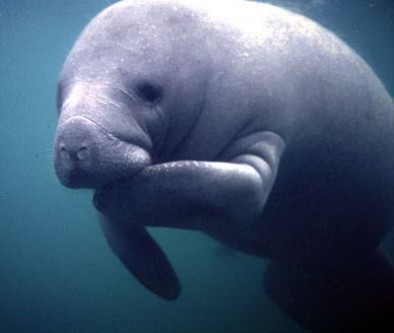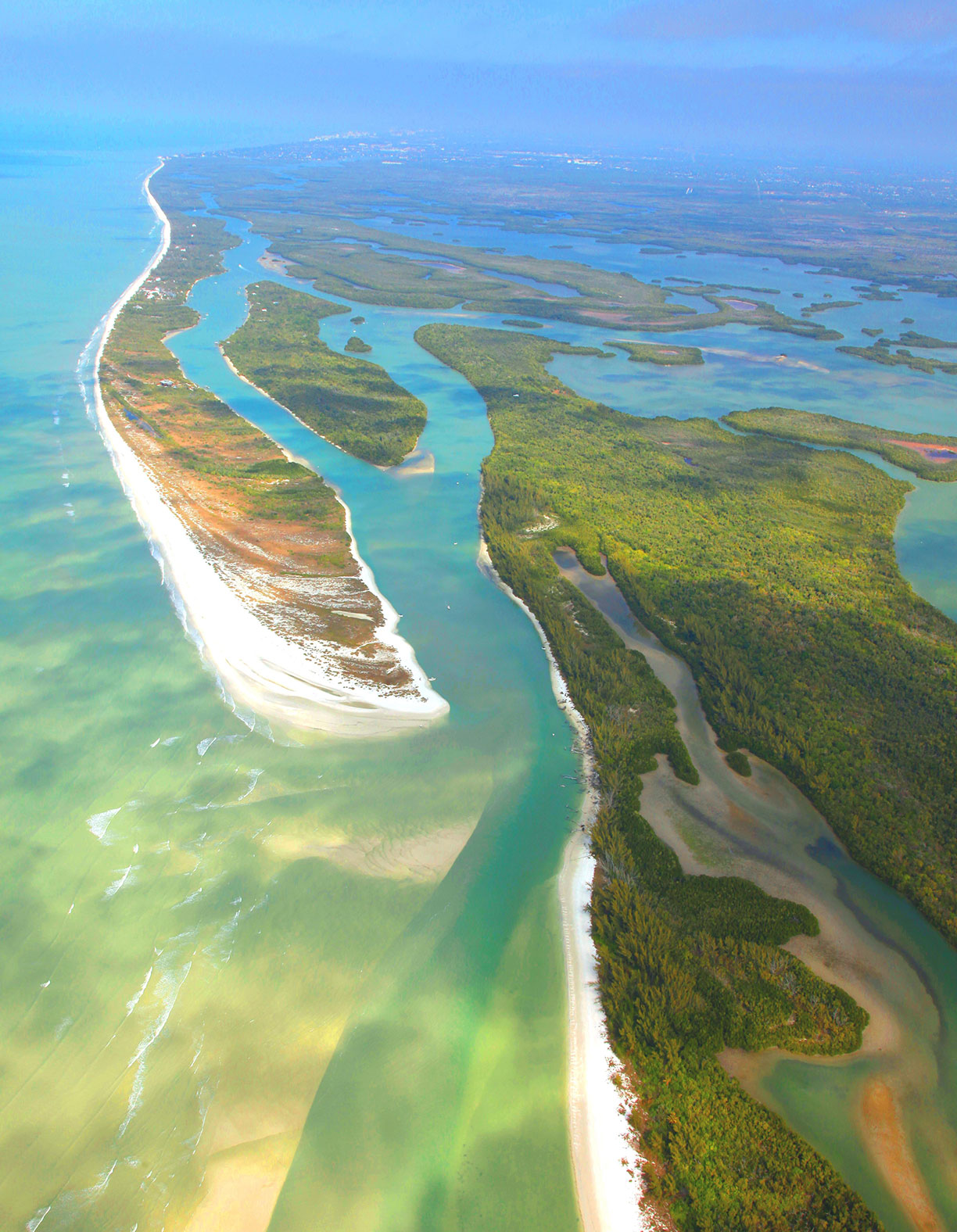
Of all the wildlife you might see aboard your Double Sunshine cruise, the manatee is perhaps the most unique. Let’s take a moment and look deeper into the life and love of what many call “Cutest Mammal” in Southwest Florida.
The Basics
The manatee or “Sea Cow”, can grow to over 9 feet in length and weigh up to 1200 pounds! The manatee are great swimmers that can reach speeds up to 19 mph for short distances and spend a predominate amount of time under water, only coming up for air every 20 minutes. It is believed that the manatee evolved from a four-legged land mammal over 60 million years ago. It’s closest living relative today is the Elephant.
Habitat
Water temperature is the most important aspect of the habitat forthe manatee. Due to it’s physiology, the manatee cannot survive in water temperatures that are less than 60 degrees Fahrenheit, which is why manatees so prefer the shallower rivers that surround power plants and warm spring-fed rivers. The water they tend to favor is usually brackish and while they must swim in salt water, they can easily move between waters that have different levels of salinity.
Diet
Manatees are considered herbivores due to their diet which consists of more than 60 different plant species, including mangrove leaves and turtle grass.

However, they have been known to show some elements of carnivorous traits in their eating behaviors because manatees have been observed eating small fish from nets. It should be noted that this behavior has not been noted in all manatees and does not take into account primary food source availability or nearness to starvation.
Mating and Life Span
Manatees are typically solitary creatures except when raising young, they mate for reproduction purposes and then move on. The female manatee will breed once every two years with a gestation period of about 18 months and only have one calf at a time. Calves are generally about 120 cm long and weigh about 66 pounds and will stay with their mothers for between one and two years depending on it’s rate of maturity. The manatee can live up to 60 years and it is believed that the oldest Manatee currently lives in captivity Snooty lives at the South Florida Museum and he was born in July 1948 making him 64 years old!
Conservation
Sadly, the West Indian Manatee is an endangered species. While sharks and alligators have been known to attack manatees, their two largest hazards are red tide and man.

From Wikipedia: “In 1996, a red tide was responsible for 151 manatee deaths. The epidemic began on March 5 and continued through April 28, wiping out approximately 15% of the known population of manatees along South Florida’s western coast. In 1982, another outbreak resulted in 37 deaths, in 2005, 44 more deaths were attributed to the blooms. “
While red tide hazards to manatees is important to note, red tide doesn’t come close to doing as much damage to the manatee population as man has. Some of the more subtle negative ways that man affects manatee life negatively is through destruction of manatee habitat and with it’s waste. Manatees have been known to ingest fishing gear including hooks, weights and mono-filament string which get’s caught in the digestive system of the manatee and slowly kills it.
The number one most damaging thing to manatee survival is boat strikes. Again from Wikipedia, “In the absence of any new management action, that is, if boat mortality rates continue to increase at the rates observed since 1992, the situation in the Atlantic and Southwest regions is dire, with no chance of meeting recovery criteria within 100 years.”
This is just one of the reasons Pure Naples takes it’s adherence to all speed and wake laws very seriously in Naples Bay.
So the next time you come out, if you’re in luck, look towards the bridge and you just might see a manatee or two enjoying the warm waters and sunshine that falls on Naples Bay.

